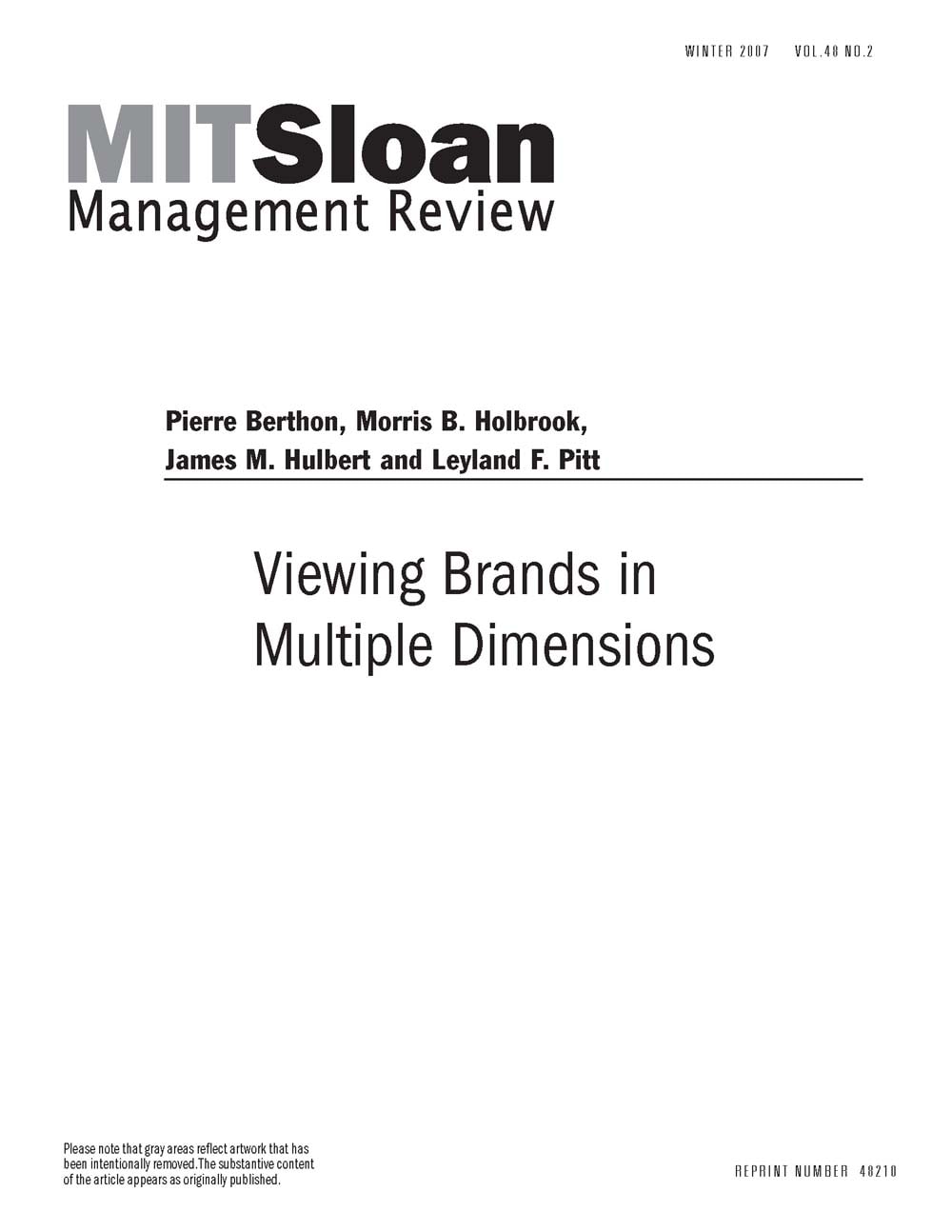
Viewing Brands in Multiple Dimensions
Contrary to the beliefs of many managers, their companies' product and corporate brands cannot truly be managed, much less owned. That much has become clear in recent years as many well-known brands have seemed to take on lives of their own, changing in the minds of many even though management may think of them as immutable.
In this article, the authors introduce the concept of a "brand manifold" in order to bring out two overlooked factors: first, that brands have multiple dimensions depending on who is valuing them, and second, that those dimensions change in space and time. Drawing on automotive industry examples such as Maybach, Morgan, and BMW's Mini, the authors demonstrate the importance of managing a brand's evolution so that the brand does not lose its roots in the past.
The article goes on to highlight the importance of understanding that brands have a life and meaning independent of what their initiators intended -- as embodied by the thriving user community around Apple Computer's long-obsolete Newton handheld and evident in the influence of Harley-Davidson owners over many of the company's strategic decisions.
In this article, the authors introduce the concept of a "brand manifold" in order to bring out two overlooked factors: first, that brands have multiple dimensions depending on who is valuing them, and second, that those dimensions change in space and time. Drawing on automotive industry examples such as Maybach, Morgan, and BMW's Mini, the authors demonstrate the importance of managing a brand's evolution so that the brand does not lose its roots in the past.
The article goes on to highlight the importance of understanding that brands have a life and meaning independent of what their initiators intended -- as embodied by the thriving user community around Apple Computer's long-obsolete Newton handheld and evident in the influence of Harley-Davidson owners over many of the company's strategic decisions.




